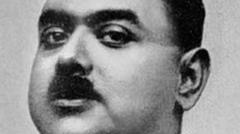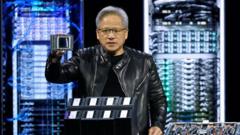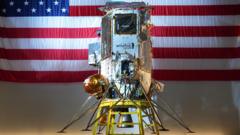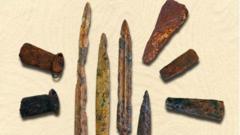Archaeologists express optimism that technology could unlock the scroll's philosophical content, reflecting a significant step in understanding the past.
**Ancient Scroll Revealed by Cutting-Edge Technology After Millennia**
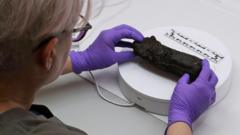
**Ancient Scroll Revealed by Cutting-Edge Technology After Millennia**
Scientists utilize AI and X-ray imaging to "unwrap" a charred ancient scroll for the first time in 2,000 years.
A burnt scroll from the ancient Roman town of Herculaneum, which has lain in obscurity for two millennia, has recently been "unwrapped" using advanced imaging techniques, providing a rare opportunity to glimpse its contents. The scroll, which appears as a lump of charcoal due to the devastating volcanic eruption of Mount Vesuvius in 79 AD, is too delicate to be opened physically. However, a fusion of X-ray imaging technology and artificial intelligence has allowed researchers to visualize its inner text, offering a glimmer of hope for future readability.
Stephen Parsons, who leads the Vesuvius Challenge, a global initiative aimed at deciphering the Herculaneum scrolls, is optimistic about decoding the text. Preliminary results reveal clear letters, suggesting that the manuscript might contain philosophical writings. “We’re confident we will be able to read pretty much the whole scroll in its entirety,” Parsons stated, marking a promising development in archaeological science.
The scrolls, originally thought irretrievably lost to time, were discovered in Herculaneum, a site sharing a tragic history with Pompeii, both cities engulfed by volcanic ash. Many of these ancient texts, crafted from papyrus, succumbed to the ravages of time, leaving them unreadable and vulnerable. Previous attempts to physically open these documents resulted only in further destruction.
The Bodleian Library at the University of Oxford houses several of these scrolls, which had remained untouched for decades before this initiative. Nicole Gilroy, head of book conservation, noted the past skepticism concerning the safety and efficacy of techniques available for such fragile artifacts. Nonetheless, the promise of a high-tech solution prompted new efforts to examine the scrolls in detail.
The scroll was examined at the Diamond Light Source facility in Oxfordshire, where it was subjected to a powerful X-ray beam, generated by accelerating electrons to near-light speeds. "It can see things on the scale of a few thousandths of a millimeter," explained Adrian Mancuso, the facility's director of physical sciences. The resulting scans create a three-dimensional reconstruction of the scroll, allowing researchers to identify the individual layers of the papyrus.
Artificial intelligence plays a critical role in detecting ink on the scroll. As both ink and papyrus are carbon-based substances that appear quite similar, the AI must analyze subtle variations to reveal the hidden text. "We can tell the entire scroll is full of text," Parsons remarked, and there lies the potential to transform glimpses of a few letters into substantial passages from the ancient past.
Last year's Vesuvius Challenge also reported progress, having deciphered about 5% of another Herculaneum scroll, which focused on Greek Epicurean philosophy—an exploration of finding fulfillment in everyday pleasures. There is anticipation that this newly addressed scroll could share similar themes, though researchers call for further ingenuity in both human scholarship and technological aid to prove the hypothesis.
Gilroy emphasized the emotional significance this research carries, connecting modern scholars with individuals from antiquity. “There’s a real human aspect to it that I just think is really precious,” she expressed, demonstrating the profound implications of interpreting thoughts and ideas from a time long gone.

